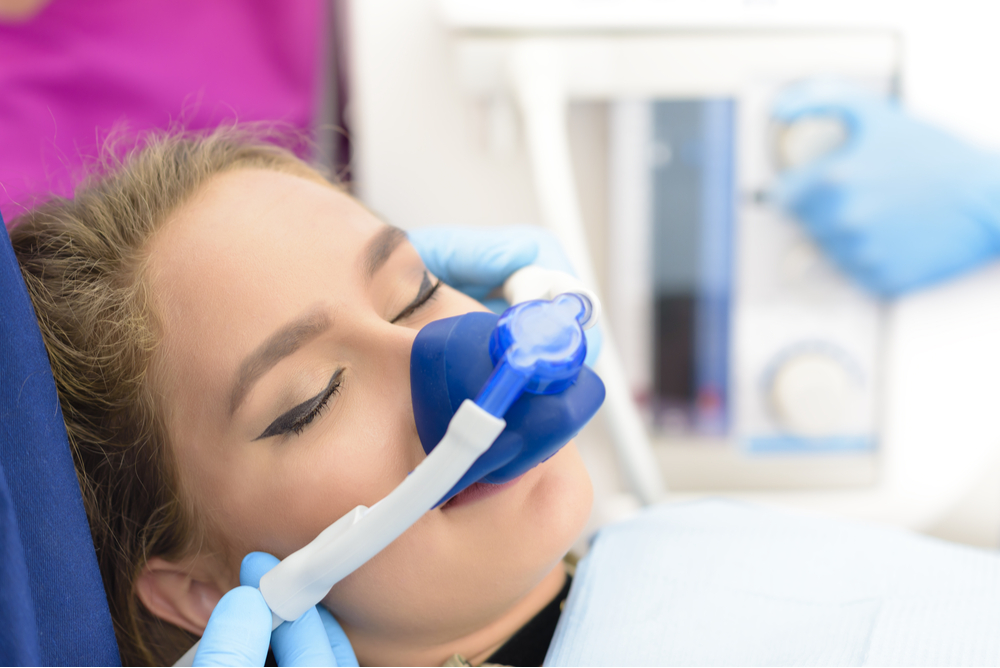There is a lot of confusion surrounding the topic of sedation dentistry. Some people are unsure if it is safe, while others are unsure of what it actually entails. In this blog post, we will define and explain sedation dentistry, as well as discuss the different types of sedation and how they work. We will also talk about who is an ideal candidate for dental sedation and those who may be at an increased risk. Finally, we will provide a summary of what was said in this blog post and answer the question: Is sedation dentistry safe?
Types of Dental Sedation
Sedation dentistry is the use of medication to help patients relax during dental procedures. There are three types of sedation: inhaled, oral, and IV sedation.

Inhaled Sedation
Inhaled sedation, also known as laughing gas, is nitrous oxide gas that is inhaled through a mask worn over the patient’s nose. This form of sedation promotes feelings of relaxation and possible euphoria, while keeping that patient aware and responsive.
Oral Sedation
Oral sedation is a pill that is taken before the procedure that makes the patient drowsy. This form of sedation uses prescription medications to achieve a deeper level of relaxation.
IV Sedation
IV sedation is a medication that is given through an IV that helps the patient relax and can make them feel sleepy. The level of sedation can range from minimal to deep sedation, or even general anesthesia.
Levels of Sedation
In addition to the different types of sedation, there are also different levels of sedation that can be achieved. These include:

Minimal Sedation
With minimal sedation, the patient remains awake and is able to respond to questions and commands. Inhaled sedation is generally used to achieve a minimal level of sedation.
Moderate Sedation
With moderate sedation, the patient may slur their words or not remember the procedure. Oral sedation is often used to achieve a moderate level of sedation, however IV sedation can also achieve this level.
Deep Sedation
With deep sedation, the patient is on the brink of unconsciousness but can still be awakened. People under deep sedation will not remember the procedure afterwards. Oral sedation can sometimes be used to achieve a deep level of sedation, however IV sedation is most commonly used for deep sedation.
General Anesthesia
With general anesthesia, the patient is completely unconscious and will not respond to questions or commands. IV sedation is used to administer and reverse general anesthesia.
Ideal Candidates for Dental Sedation
Ideal candidates for dental sedation are those who have a fear of going to the dentist, those who have a sensitive gag reflex, or those who need to have multiple dental procedures done at one time. Dental sedation can also be used simply to relieve anxiety during dental visits and procedures.
However, there are some people who may be at an increased risk for complications when undergoing sedation dentistry. These people include pregnant women, those taking certain medications, and those with certain medical conditions. It is important to talk to your dentist about any risks or concerns you may have before undergoing dental sedation. Some forms of dental sedation may be better for you than others and your dentist can help you make a decision regarding whether dental sedation is right for you.
Is Sedation Dentistry Safe?
So, is sedation dentistry safe? When performed by a trained and licensed professional, sedation dentistry is a safe and effective way to help patients relax during dental procedures. The American Dental Association requires sedation dentists (and their clinical staff) to complete an advanced education program (in minimal, moderate, deep sedation, or general anesthesia), be certified in Basic Life Support for Healthcare Providers, and be certified in Advanced Cardiac Life Support (ACLS) or equivalent.
However, as with any medical procedure, there are always risks involved. These risks can be minimized by ensuring that the patient is an ideal candidate for dental sedation and by choosing a qualified and experienced dental professional.
In Conclusion
In this blog, we have answered the question: is sedation dentistry safe? We have defined and explained the different types of sedation (inhaled, oral, and IV sedation) and discussed how they affect the body. We have also described the different levels of sedation (minimal, moderate, deep, and general anesthesia), ideal candidates for dental sedation, and those who may be at an increased risk. If you are considering sedation dentistry, we hope that this blog has been helpful in answering some of your questions. As always, feel free to contact our office with any further questions or concerns. Thank you for reading!
